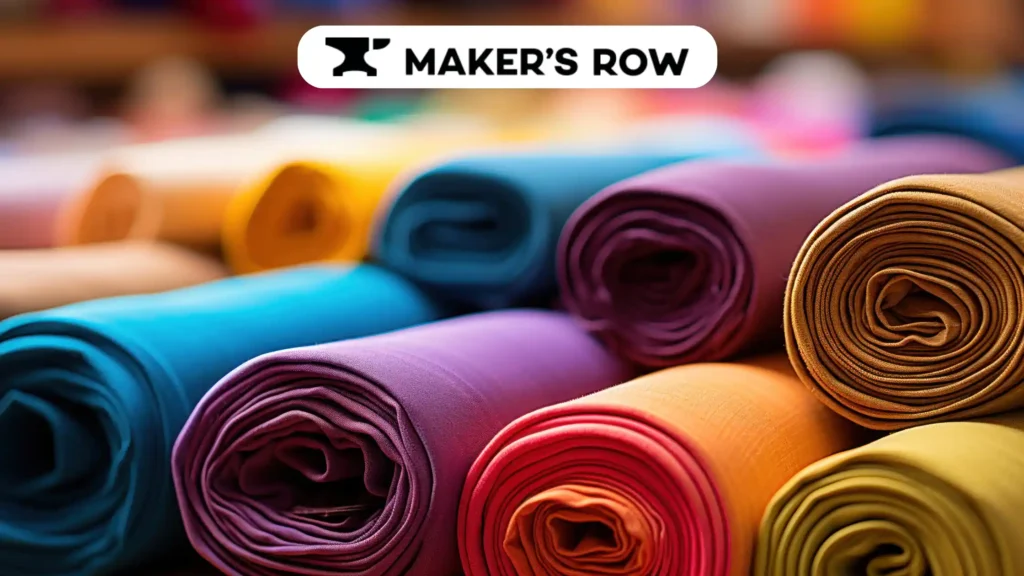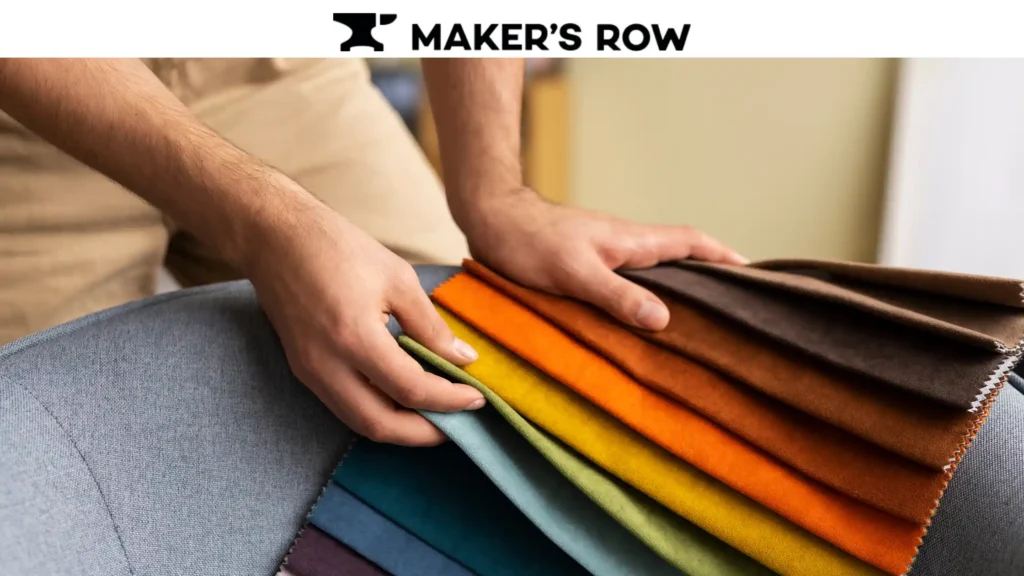From the sportswear you adore to the cushions of your couch, the polyester fabric is everywhere. Ever wondered what lies behind the extensive use of the polyester fabric in our everyday lives? Material requirements are not the only thing that is satisfied—this synthetic marvel also provides long-lasting shape stability, water-repellant and hygienic features that make it a material for clothing and practically anything one can think about, including domestic surroundings.
But how is polyester fabric produced in the first place? What makes it special? Whether you are in need of polyester fabric clothes for gyms and sports or are selecting fabrics for upholstery, this blog will be highly useful since it will present all the necessary information regarding polyester, including its production, characteristics and usage.
What is Polyester Fabric?
Polyester textile is a kind of man-made fabric made from polyester threads. Polymers are chemicals derived from fossil fuels that make up these fibers. The creation of the fabric involves a process called polymerization, whereby the wastes from oil products are heated and twisted into treads. The end product, which is referred to as polyester fabric, consists of these threads woven or knitted together.
Polyester fabric, known for its durability and resistance to shrinking and stretching, has a wide range of applications. Polyester can be found almost everywhere, ranging from clothing to sofa coverings and others, indeed, they are even used for making bottles and wrapping materials, among other plastics (which again come from oil). Furthermore, due to its moisture management, polyester is often preferred for sportswear and outdoor equipment.

Properties of Polyester Fabric
Polyester fabric has several notable properties that make it popular for various uses:
- Durability: Polyester is highly resistant to wear and tear, making it a long-lasting fabric.
- Moisture Resistance: It wicks moisture away from the body, making it ideal for athletic clothing.
- Wrinkle Resistance: Polyester fabric is wrinkle-resistant, reducing the need for ironing.
- Stretch Resistance: Unlike natural fibers, polyester doesn’t stretch easily.
- Color Retention: Polyester fabric retains dyes well, meaning colors remain vibrant even after repeated washes.
Properties | Description |
Durability | Highly resistant to wear and tear |
Moisture-Wicking | Absorbs moisture, ideal for activewear |
Wrinkle Resistance | Does not wrinkle easily |
Stretch Resistance | Maintains shape over time |
Color Retention | Colors stay vibrant longer. |
How is Polyester Fabric Made?
There are stages of making polyester fabric. It also starts with some petrochemical components or rather substances. Here’s an overview of how this particular type of fabric is made:
- Polymerization: The fluidity of products like ethylene glycol and terephthalic acid is further induced by applying moderate heat to cause the formation of long chains (refers to heating petroleum products to create chains like polymers).
- Fiber Spinning: Polyester fibers are formed by forcing a liquid polymer solution through a spinneret.
- Fibers drawing: Polymer fibers are pulled out of its solids to make it strong and elastic.
- Fabrication: All these fibers are then either woven or knitted to form fabric
Types of Polyester Fabric
There are several types of polyester fabric, each with unique characteristics and uses. These include:
- PET Polyester (Polyethylene Terephthalate): This is the most common type of polyester used in clothing and textiles.
- PCDT Polyester (Poly-1, 4-cyclohexylene-dimethylene terephthalate): Known for its elasticity and resilience, it’s often used in upholstery and heavy-duty fabrics.
- Recycled Polyester: Made from recycled plastic, such as water bottles, this type is gaining popularity due to its sustainability.
| Type of Polyester | Description |
| PET Polyester | Commonly used in apparel and home furnishings |
| PCDT Polyester | More elastic, used in upholstery |
| Recycled Polyester | Made from recycled plastics, eco-friendly |
Where is Polyester Fabric Made?
The manufacture of polyester fabric is done in many countries. The largest producers of polyester are China, India, and the USA. Half of the world’s total production of polyester comes from China. India and the US equally follow China, with their markets expanding in other Southeast Asian countries.
Uses of Polyester Fabric
Polyester fabric is versatile and can be used in many applications, including:
- Clothing: Many garments, such as shirt and dress , and sportswear contain polyester, whose major property is its strength and its capability of moisture management.
- Home Textiles: Many people use the polyester fabric for home use items like curtains, bed sheets, etc.
- Industrial Uses: Polyester is made into ropes, conveyor belts and other industrial materials.
Advantages of Polyester Fabric
Unlike many fabrics, polyester fabric has a lot of advantages, which make most producers and users of it have no regrets. Some of these advantages are:
- Cost-effective: When compared to natural fibers such as cotton, polyester is cheap.
- Low Maintenance: The polyester fabric is not difficult to manage and rarely needs frequent pressing.
- Quick Drying: Due to its quick moisture-retaining properties, polyester is faster at dying than the majority of natural fibers.
- Durability: It has good tensile strength and is resistant to deformation, making it suitable for usage in robust operations.
Disadvantages of Polyester Fabric
However, polyester does have some downsides, including:
- Not Biodegradable: Since it’s a synthetic fabric, polyester takes a long time to break down.
- Not as Breathable: Polyester can feel less comfortable than natural fibers in hot climates.
- Environmental Impact: Polyester production relies on non-renewable resources, contributing to environmental pollution.
How Much Does Polyester Fabric Cost?
Cost of polyester fabric varies based on several factors like the type, quality and production process of the material. The average price for polyester fabrics ranges from two to ten dollars per yard. As a result, basic types commonly used in clothing and upholstery tend to be at lower prices, while specialized or eco-friendly versions such as recycled polyester may be expensive. Buying fabric in bulk significantly reduces its price, thus making polyester a cheap option for manufacturers. Other factors influencing pricing include color fastness, texture and mix of other fibers, e.g. cotton blends.. One of the most appealing qualities of polyester for businesses is its affordability.
How Does Polyester Fabric Impact the Environment?
Among the many issues and problems linked to polyester fabric, the most caring of them all is its effect on the environment. Since polyester is a synthetic material, it is made out of a natural resource, which is petroleum. More about polyester further disqualifies it concerning sustainability as natural resources waiting for degradation. Additionally, manufacturing polyester fabric offshore takes a high level of energy and chemicals, hence producing greenhouse gases.
The single biggest drawback of polyester is also pollution in the form of non-biodegradables. Such materials can literally take hundreds of years when dumped in landfills. Also, as people wash their polyester fabric, microplastics are shed into the water system, which is detrimental to sea creatures.
In place of virgin polyester, recycled polyester, which is produced from used PET bottles, is a more environmentally friendly material. Such health problems related to using polyester are somehow relieved, although the supply chains are still hazardous due to the recycled polyester as there is a higher demand for new plastic products.
In order to reduce the adverse effects of polyester fabric on the environment, consumers as well as businesses are gradually embracing sustainable alternatives and closed loop systems that focus on recycling and extending the use of materials.
Conclusion
Polyester fabric has revolutionized the textile industry due to its durability, versatility, and cost-effectiveness. Polyester fabric is one of the most popular manmade fabrics in the textile sector. The typical clothing on the fashion market today is very durable, multipurpose, and inexpensive. Polyester is used for a vast multitude of products, from garments to upholstery and industrial goods.
On the other hand, the fabric has some negative impacts on the environment; however, its benefits outweigh the negative impacts as it is commonly used in the manufacture of clothes, household items and industrial products. Nevertheless, as the demand increases for more environmentally friendly product solutions, outsourcing polyester recycling services is becoming an advantageous option where the pros outweigh the cons.
How Maker’s Row Can Help
Whether you’re a designer in need of sustainable polyester fabric or a business looking for a reliable supplier, Maker’s Row is here to help. We connect brands with top-tier manufacturers across the USA, including those specializing in polyester fabric types like recycled polyester and eco-friendly production processes. Our platform makes it easy to find the right partner for your project, from sourcing high-quality polyester fabric to producing custom textiles. By using Maker’s Row, you gain access to a vast network of vetted factories, ensuring a seamless production process and high-quality results. Explore Maker’s Row today and start sourcing the perfect polyester fabric for your next project.
ALSO READ

